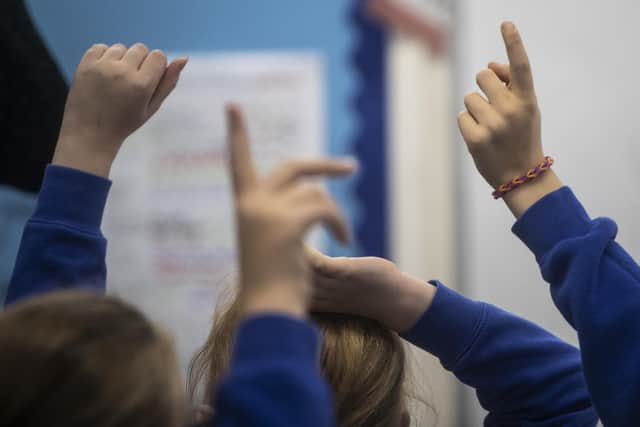Removing socio-economic inequality in early childhood would reduce the number of children experiencing adversities - Kate Pickett
We know already that children in the North of England are more likely to be growing up in poverty, 34 per cent of children compared to 28 per cent in the rest of the country, but now the evidence shows that children have been further disadvantaged with less education funding in its crumbling schools.
Pupils in London received 9.7 per cent more funding than those in the North. Schools in London received an average of £6,610 per pupil compared to £6,225, £5,956, and £5,938 in the North East, North West, and Yorkshire and The Humber respectively.
Advertisement
Hide AdAdvertisement
Hide AdStudents in London achieve a third of a grade higher, on average, than students in the North - this funding gap and attainment gap cannot be looked at as coincidental.


School absence rates were also greater in the North East and Yorkshire and The Humber, compared to London in the 2022/23 autumn term, and children were more likely to be persistently absent in the North East, 25.6 per cent, and Yorkshire and the Humber, 24.5 per cent; compared to Outer London, 23.1 per cent and Inner London, 23.8 per cent.
Deprived communities across the country have been impacted by this funding inequity. Under the National Funding Formula, the Government formula that takes a variety of factors into account, such as the number of pupils a school has and how its location may affect the school’s running costs, funding per pupil increased by 4 percentage points less in the most-deprived primary schools, 0.7 per cent, compared to the least-deprived ones, 4.8 per cent, between 2017–18 and 2022–23, creating a lag in the reduction of the inequality gap.
Austerity policies of the Liberal Democrat and Conservative government saw money cut hardest from the poorest local authorities further impacting the social and cultural safety net around children and today, as the cost of living crisis continues to hit and inequality has been piled on top of existing inequality with long term impacts for children’s lives and the nation’s skillset.
Advertisement
Hide AdAdvertisement
Hide AdChildren who fail to reach a good level of development on the Early Years Foundation Stage Profile are three times more likely to become a persistent absentee, and three times more likely to become NEET (Not in Education, Employment or Training) at 16-18 years of age. Children born into the poorest fifth of families in the UK are almost 13 times more likely to experience poor health and educational outcomes by the age of 17 and children from the lowest income households are five times more likely to experience poor academic achievement.
It is not right or cost effective to allow poverty and inequalities, compounded through unequal funding, to continue. Removing socio-economic inequality in early childhood would reduce the number of children experiencing multiple adversities by more than 80 per cent.
But there is reason for positivity - our report highlights some exceptional programmes which can be used to drive forward educational and health outcomes with better use of existing resources, which with comparatively little investment, can have a big return.
A targeted investment in children pays off for years down the road. Lifting children out of poverty earlier improves educational and health prospects making for a happier, healthier, more productive and fairer society.
Advertisement
Hide AdAdvertisement
Hide AdThe work being done in Yorkshire, particularly within the Born in Bradford research group, has illuminated some groundbreaking projects using schools and nurseries as “hubs” for delivering health services, especially within disadvantaged communities.
It has seen the power of partnerships between local authorities, schools, health services, police, community, universities, and businesses which have achieved significant improvements to children’s health and education through schools and nurseries.
One such project is SUCCESS (Supporting Understanding of Children’s Communication, Emotional and Social Skills) which was trialled in Bradford through the Department of Education’s Opportunity Area programme to test in schools for autism.
It had great success in effectively identifying autistic children who were likely to remain undetected for longer, and therefore be vulnerable to poorer outcomes as well as helping families overcome hesitancy about visiting Child and Adolescent Mental Health Services (CAMHS).
Advertisement
Hide AdAdvertisement
Hide AdWe must act early to address problems before children enter school and avoid the long-term costs associated with a lack of school readiness.
We need to target investment to improve access to high-quality training for early years educators and health visitors to improve staff retention and uptake.
Kate Pickett, academic co-director of Health Equity North, secretariat for the Child of the North APPG, and Professor of Epidemiology at the University of York.